Użytkownik:LOKomarowka/Władysław Szaniawski - engineer and astronomer: Różnice pomiędzy wersjami
mNie podano opisu zmian |
m (→References) |
||
| (Nie pokazano 18 pośrednich wersji utworzonych przez tego samego użytkownika) | |||
| Linia 1: | Linia 1: | ||
'''Władysław Szaniawski''' (15 July 1861 - 16 January 1931) was a visionary, inventor and the owner of Przegaliny Duże who created an astrological observatory and meteorological station in his mansion. | [[Plik:Image1.png|mały|Władysław Szaniawski]] | ||
'''Władysław Szaniawski''' (15 July 1861 - 16 January 1931) was a visionary, inventor and the owner of Przegaliny Duże who created an astrological observatory and meteorological station in his mansion. | |||
== Life and career == | == Life and career == | ||
=== Early | === Early life and education === | ||
Władysław Szaniawski was born on 15 July,1861 in Przegaliny Duże, Radzyński district (Podlasie). He was the only son of Countess Ksawera Adelajda Bieńkowska of the Jastrzębiec coat of arms and Wiktor Szaniawski of the Junosza coat of arms, a landowner and the owner of Przegaliny. Władysław spent his childhood in a highly patriotic atmosphere that pervaded the whole family in those times of oppression and persecution of Polishness. His father took an active part in the 1863 uprising, which led to him being imprisoned and sentenced to death by the Russians in Radzyń Podlaski. Fortunately, he managed to avoid this thanks to the skillful efforts of his wife and friends. | Władysław Szaniawski was born on 15 July,1861 in Przegaliny Duże, in the Radzyński administrative district (Podlasie). He was the only son of Countess Ksawera Adelajda Bieńkowska of the Jastrzębiec coat of arms and Wiktor Szaniawski of the Junosza coat of arms, a landowner and the owner of Przegaliny. Władysław spent his childhood in a highly patriotic atmosphere that pervaded the whole family in those times of oppression and persecution of Polishness. His father took an active part in the 1863 uprising, which led to him being imprisoned and sentenced to death by the Russians in Radzyń Podlaski. Fortunately, he managed to avoid this thanks to the skillful efforts of his wife and friends. | ||
Young Władysław was educated at the 4th Classical Gymnasium in Warsaw, then he changed school and studied at the St. Anna Gymnasium (at present – B.Nowodworski I Upper Secondary School) in Cracow, which he graduated from in 1880. Since an early age he showed an outstanding passion and aptitude for mathematical sciences and mechanics, therefore he was sent to Ghent in Belgium to acquire higher education. In 1880 | Young Władysław was educated at the 4th Classical Gymnasium in Warsaw, then he changed school and studied at the St. Anna Gymnasium (at present – B.Nowodworski I Upper Secondary School) in Cracow, which he graduated from in 1880. Since an early age he showed an outstanding passion and aptitude for mathematical sciences and mechanics, therefore he was sent to Ghent in Belgium to acquire higher education. In 1880 he entered the Ecole Speciale des Arts et Manufactures at the local university. During the studies, Władysław attracted attention of the most eminent professors of Ghent University with a number of excellent ideas and designs of technical devices made with extraordinary precision. He graduated from the university with the highest distinction (grande distinction) in 1884 receiving a degree in Engineering. | ||
=== '''Pioneer, visionary, inventor''' === | === '''Pioneer, visionary, inventor''' === | ||
Despite receiving promising offers to stay in Belgium, Władysław decided to return to Poland. There he was employed for some period of time at the design department of the engineering, production and construction company K. Rudzki i S-ka. Founded in Warsaw in 1858 as an iron foundry by Count Andrzej Artur Zamoyski and run by Konstanty Rudzki, it expanded its activities into construction, steel industry and engineering. At the end of the 19th century, the company with its headquarters in Warsaw and a factory in Mińsk Mazowiecki became one of the largest bridge building companies in Central and Eastern Europe, having approximately 20% of shares in the construction of bridges in the Russian Empire. After World War I, the machine production part of the company was stopped, but engineering and construction activities continued. During its existence, the company was responsible for some innovative bridge structures in the world | Despite receiving promising offers to stay in Belgium, Władysław decided to return to Poland. There he was employed for some period of time at the design department of the engineering, production and construction company K. Rudzki i S-ka.[3] Founded in Warsaw in 1858 as an iron foundry by Count Andrzej Artur Zamoyski and run by Konstanty Rudzki, it expanded its activities into construction, steel industry and engineering. At the end of the 19th century, the company with its headquarters in Warsaw and a factory in Mińsk Mazowiecki became one of the largest bridge building companies in Central and Eastern Europe, having approximately 20% of shares in the construction of bridges in the Russian Empire. After World War I, the machine production part of the company was stopped, but engineering and construction activities continued. During its existence, the company was responsible for some innovative bridge structures in the world including the construction of the Poniatowski Bridge in 1914, the Khabarovsk Bridge in 1916 (2,500 m length, it was considered to be the longest bridge in Europe and Asia for several decades) and the construction of the Maurzyce Bridge in 1927, the first welded road bridge in the world. | ||
The odds were that this man would pursue his aim decisively and irresistibly, which he proved later. At first, Władysław conformed with his father's wish to run a farm of the Przegaliny family estate and despite the lack of special agricultural education, he successfully mastered the hardships and problems of the landed gentry. This provided him with a material basis for putting into practice and realizing his purely scientific passions. | The odds were that this man would pursue his aim decisively and irresistibly, which he proved later. At first, Władysław conformed with his father's wish to run a farm of the Przegaliny family estate and despite the lack of special agricultural education, he successfully mastered the hardships and problems of the landed gentry. This provided him with a material basis for putting into practice and realizing his purely scientific passions. | ||
[[Plik:Image 9.png|mały|'''Astronomical Observatory, 1911Source: <nowiki>https://kochamradzyn.pl/poznajcie/5271-obserwatorium-astronomiczne-wladyslawa-szaniawskiego-w-przegalinach-duzych.html</nowiki>''']] | |||
The skillfully managed farm brought prosperity which Szaniawski later used for purposes of great scientific value. During his travels around Europe he collected everything that would later contribute to increasing the value and improving the efficiency of the emerging scientific institution. Władysław created a mechanical workshop in Przegaliny, fully equipped with a lot of accurate instruments, such as lathes, machines for cutting cogs and gearwheels, etc. The scientist made various mechanical and electrical instruments, among others, an instrument to determine the direction and speed of the wind. An announcement about this device was made by Professor Wł. Gorczyński at a meeting of the Warsaw Scientific Society in 1910, where they fully recognized its extraordinary convenience and precision as a meteorological instrument. It was the so-called '''anemophone''' that allows you to measure wind speed and direction by ear from a distant or inaccessible anemometer. | |||
[[Plik:Image 1 .png|mały|''Szaniawski Palace with a telescope on the towerSource:<nowiki>http://www.ogrodowy.minigo.pl/index.php/page/przegaliny-wielkie</nowiki>'']] | |||
Władysław Szaniawski had established a well-equipped second-class meteorological station in Przegaliny, which he ran himself for many years. It is worth mentioning that Szaniawski made two large pendulum clocks with compensating pendulums, made of metal bars. One of them showed the phases of the Moon. Szaniawski also built two large striking tower clocks, one of these clocks is located in the Żelechów church (Garwoliński district), while the larger one, striking hours, half-hours and quarters, was donated to the church in Komarówka Podlaska (Radzyński district). Unfortunately, the Russians blew up the latter one along with a tower using pyroxylin in 1915. | |||
=== '''Astronomical Observatory''' '' '' === | |||
[[Plik:Image 4.png|mały|Source: <nowiki>https://kochamradzyn.pl/poznajcie/5271-obserwatorium-astronomiczne-wladyslawa-szaniawskiego-w-przegalinach-duzych.html</nowiki>]] | |||
[[Plik:Image 6.png|mały|Rieffler escapementSource: https://pl.wikipedia.org/wiki/Wychwyt]] | |||
[[Plik:Image 7.png|mały|[[Plik:Image 8.png|mały|Carl Zaiss refractor – current state and in the 1930s]]]] | |||
Władysław Szaniawski considered all his research and activities done so far as an introduction and preparation for greater work, for his ultimate love, i.e. astronomy. In 1909, Szaniawski built an astronomical observatory in Przegaliny. A single-storey, rectangular building with a slot in the roof - which was the observatory's meridian room, housing the meridian wheel of the Parisian Mailhat factory with an 81 mm lens. An integral complement to this wheel was a precise pendulum clock. This is the instrumentation used to determine the exact time, indispensable in every observation room. There was also a Riefler clock with a steel-nickel pendulum with electric winding. This clock provided a second contact and was connected to the refractor's clock mechanism in order to synchronize it. However, the main tool of the observatory and its real pride was the wonderful refractor, the largest and most beautiful in Poland at that time. The main telescope with a 20 cm Zeiss lens and 310 cm focal length housed two excellent astro cameras to take the photographs of the sky. The "astrotessar" astrocamera lenses were 12 cm in diameter and had a focal length of 60 cm each. There was also a 108 mm Steinheil telescope fixed to the main telescope, used to guide the refractor while taking photos at the focus of the main telescope. This entire tool, looking extremely impressive and imposing, was housed in a separate dome, made in a factory in Warsaw. The whole thing was complemented by a very accurate, one of the best of its kind, Repsold’s film measuring device. A detailed description of the tools can be found in the article by W. Szaniawski in "Wiadomości Matematyczne", Volume XV, pp. 263 - 268. | |||
Before World War I the observatory had a radio receiving station built by Władysław Szaniawski. When radio legislation came into force in Poland, the scientist was the first to receive permission from the Ministry of Posts and Telegraphs to use radio equipment. The Przegaliny Observatory was unique and an unrivalled model for many governmental institutes. Szaniawski did not isolate himself in his research but maintained contact with university observatories in Warsaw, Cracow and Lviv. | |||
[[Plik:Image 1.png|mały|''Source: "Władysław Szaniawski. Astronom z Przegalin Dużych. Dzieje rodu Szaniawskich i historia miejscowości" by Jakub Hapka, p.109'']] | |||
In 1914, the war broke out and the village of Przegaliny was in a war zone. The lenses of the main tools were hidden, but during some military operation the glasses and optical parts from the left glasses, micrometers, etc. were stolen. After the Germans had left, the items were returned to Przegaliny. The resumption of normal activity of the observatory was interrupted by the Bolshevik onslaught in 1920. Fortunately, it passed without any damage to the observatory. However, the war left behind a lot of terrible consequences. The Przegaliny estate, exhausted by the war, devastated by the German economy during the occupation, plowed by the Bolshevik wilderness - could no longer recover to its former state. The difficult financial situation of the state and the general economic crisis did the rest. The difficult situation of the property, at risk of total ruin, forced Szaniawski to liquidate the Observatory in 1925. Almost all of the instruments from the Observatory were purchased by Nicolaus Copernicus National Astronomical Institute. It was a painful blow for Szaniawski to get rid of his workshop which cost him a lot material sacrifice, effort, systematic work and fervent enthusiasm. | |||
=== Death === | |||
Władysław Szaniawski died on 16 January, 1931. He was the only member of the family to be buried in the cemetery in Przegaliny Duże. To this day, his grave is attended and decorated with fresh flowers by the local people. The inscription on the tombstone reads: | |||
'''''Late Władysław Szaniawski''' '' | |||
'''''Owner of the Przegaliny estate''''' | |||
'''''Born July 15, 1861 – died January 16, 1931''''' | |||
[[Plik:Image 5.png|mały|The tombstone of the Szaniawski's grave]] | |||
'''''Engineer, Astronomer''''' | |||
=== '''Private life''' === | |||
'''Firstborn son - Władysław Wiktor''' | |||
Władysław Szaniawski got married to Idalia Makomaska. The 7 of June, 1891 was a special day for them because their son, Władysław Wiktor, was born on that day but, unfortunately, Idalia died right after his birth. Władysław Wiktor was an associate professor at the University of Warsaw, Doctor of Philosophy and Natural Sciences. He participated in World War I and served as a captain of the Polish Army (so - called Dowborczyk), and was awarded the Cross of Valour. He was a passionate musician and mountaineer, also keen on photography and hunting. Władysław Wiktor died in 1975. | |||
'''Remarriage and two sons''' | |||
Władysław got married to Idalia's sister - Zofia Karolina Makomaska (born in 1880). His second wife gave birth to two sons - Jerzy and Jan Szaniawski. | |||
Jan was born in 1902. He worked as a mechanical engineer and was passionate about car technology and radio. He had been conducting agricultural activities since the division of the estate in 1944. As part of the agrarian reform, he handed it over to the then authorities. Jan Szaniawski was also involved in the construction and maintenance of agricultural equipment which proves that he had inherited the inventor gene from his father. He also carried out a more serious project - assembling a wind farm from elements. | |||
In 1942 Jan married Henryka Barbara Grabowska. In 1944 their daughter, Monika, was born. | |||
The younger son Jerzy was born in 1906. He worked as a forest engineer and farmer who managed the estate. Hunting was one of his favourite activities. Jerzy served as a a lieutenant of horse artillery and was wounded in 1939. During the German occupation of Warsaw, he was arrested and taken to Auschwitz. At the end of World War II Jerzy was freed, but he did not return to Poland and remained in Germany. He was drafted into the Guard Company in the English occupation zone, this formation was part of the Polish Armed Forces. He died and was buried in Dortmund in 1987. | |||
[[Plik:Image 12.png|mały|The Szaniawskis family tree ]] | |||
=== '''Family coat of arms''' === | |||
The Szaniawski family wears a noble coat of arms from the 13th century. Its interchangeable names are: Angus, Baran, Barany, Junoszyc. The PWN Encyclopedia states that it is most common in Lesser Poland and Greater Poland. The oldest seal comes from 1335 and it also appears in written sources. Of the over 120 families of the Junosza coat of arms, the most important were: Bieliński, Humięcki, Karnkowski, Podoscy, Radziejowski, Załuski.[1] The first mention of Junosza appears in the years 1464-1480 in a work called "Jewels of Długosz" - the oldest known local Polish description of coats of arms. | |||
The description of the coat of arms reads: a silver ram in a red field on green tuft. The jewel: five ostrich feathers. In the original form there is no tuft, the ram has golden weapon and in the jewel there is only an emblem. Franciszek Piekosiński, relying on Długosz and Ambroży's list of coats of arms, presents a lamb with its head turned back without turf. Some images of the coat of arms show a ram with its head turned backwards, without a turf. Some images of the coat of arms show a ram standing on a freely floating tuft of grass, but on a green shield base, a hill or a three-hill. [2] | |||
=== Present times === | |||
[[Plik:Image 10.png|mały|The mansion in Przegaliny]] | |||
[[Plik:Image 11.png|mały|The signboard at the Przegaliny estate]] | |||
Nowadays, the building in Przegaliny is used as the headquarters of the local motorcycle club 'Panther', which organizes every year a festival called Motopicnic on the premises of the estate. | |||
=== References === | |||
[1] <nowiki>https://encyklopedia.pwn.pl/haslo/Junosza;3918603</nowiki> [dostęp 18 VIII 2023] | |||
[2] <nowiki>https://encyklopedia.pwn.pl/haslo/Junosza;3918603</nowiki> [dostęp 4 I 2024] | |||
[3] <nowiki>https://pl.wikipedia.org/wiki/K._Rudzki_i_S-ka</nowiki> | |||
'''Bibliografia''' | |||
# "Władysław Szaniawski. Astronom z Przegalin Dużych. Dzieje rodu Szaniawskich i historia miejscowości" by Jakub Hapka, pages: 31-33, 39-44, 50-51,53, 61, 71, 78, 83, 85, 87-88, 90-92, 101-103, 106, 147-148 | |||
# Władysław Szaniawski "Z Obserwatorium Astronomicznego w Przegalinach" | |||
[[Plik:Image.png|mały|Source:<nowiki>https://encyklopedia.pwn.pl/haslo/Junosza;3918603</nowiki> [accessed January 4, 2024] ]] | |||
[[Plik:Image 3.png|mały|Source: <nowiki>http://zaliwie.pl/wp-content/uploads/2019/06/herb-zaliwie-junosza.jpg</nowiki> [Accessed 4 I 2024] ]] | |||
Aktualna wersja na dzień 23:36, 1 cze 2024
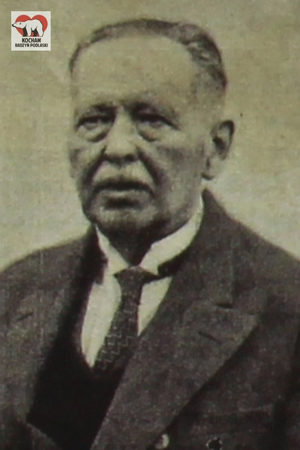
Władysław Szaniawski (15 July 1861 - 16 January 1931) was a visionary, inventor and the owner of Przegaliny Duże who created an astrological observatory and meteorological station in his mansion.
Life and career
Early life and education
Władysław Szaniawski was born on 15 July,1861 in Przegaliny Duże, in the Radzyński administrative district (Podlasie). He was the only son of Countess Ksawera Adelajda Bieńkowska of the Jastrzębiec coat of arms and Wiktor Szaniawski of the Junosza coat of arms, a landowner and the owner of Przegaliny. Władysław spent his childhood in a highly patriotic atmosphere that pervaded the whole family in those times of oppression and persecution of Polishness. His father took an active part in the 1863 uprising, which led to him being imprisoned and sentenced to death by the Russians in Radzyń Podlaski. Fortunately, he managed to avoid this thanks to the skillful efforts of his wife and friends.
Young Władysław was educated at the 4th Classical Gymnasium in Warsaw, then he changed school and studied at the St. Anna Gymnasium (at present – B.Nowodworski I Upper Secondary School) in Cracow, which he graduated from in 1880. Since an early age he showed an outstanding passion and aptitude for mathematical sciences and mechanics, therefore he was sent to Ghent in Belgium to acquire higher education. In 1880 he entered the Ecole Speciale des Arts et Manufactures at the local university. During the studies, Władysław attracted attention of the most eminent professors of Ghent University with a number of excellent ideas and designs of technical devices made with extraordinary precision. He graduated from the university with the highest distinction (grande distinction) in 1884 receiving a degree in Engineering.
Pioneer, visionary, inventor
Despite receiving promising offers to stay in Belgium, Władysław decided to return to Poland. There he was employed for some period of time at the design department of the engineering, production and construction company K. Rudzki i S-ka.[3] Founded in Warsaw in 1858 as an iron foundry by Count Andrzej Artur Zamoyski and run by Konstanty Rudzki, it expanded its activities into construction, steel industry and engineering. At the end of the 19th century, the company with its headquarters in Warsaw and a factory in Mińsk Mazowiecki became one of the largest bridge building companies in Central and Eastern Europe, having approximately 20% of shares in the construction of bridges in the Russian Empire. After World War I, the machine production part of the company was stopped, but engineering and construction activities continued. During its existence, the company was responsible for some innovative bridge structures in the world including the construction of the Poniatowski Bridge in 1914, the Khabarovsk Bridge in 1916 (2,500 m length, it was considered to be the longest bridge in Europe and Asia for several decades) and the construction of the Maurzyce Bridge in 1927, the first welded road bridge in the world.
The odds were that this man would pursue his aim decisively and irresistibly, which he proved later. At first, Władysław conformed with his father's wish to run a farm of the Przegaliny family estate and despite the lack of special agricultural education, he successfully mastered the hardships and problems of the landed gentry. This provided him with a material basis for putting into practice and realizing his purely scientific passions.
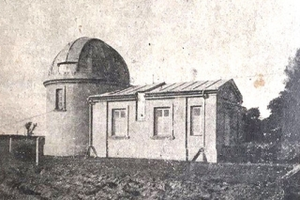
The skillfully managed farm brought prosperity which Szaniawski later used for purposes of great scientific value. During his travels around Europe he collected everything that would later contribute to increasing the value and improving the efficiency of the emerging scientific institution. Władysław created a mechanical workshop in Przegaliny, fully equipped with a lot of accurate instruments, such as lathes, machines for cutting cogs and gearwheels, etc. The scientist made various mechanical and electrical instruments, among others, an instrument to determine the direction and speed of the wind. An announcement about this device was made by Professor Wł. Gorczyński at a meeting of the Warsaw Scientific Society in 1910, where they fully recognized its extraordinary convenience and precision as a meteorological instrument. It was the so-called anemophone that allows you to measure wind speed and direction by ear from a distant or inaccessible anemometer.
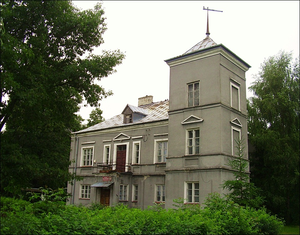
Władysław Szaniawski had established a well-equipped second-class meteorological station in Przegaliny, which he ran himself for many years. It is worth mentioning that Szaniawski made two large pendulum clocks with compensating pendulums, made of metal bars. One of them showed the phases of the Moon. Szaniawski also built two large striking tower clocks, one of these clocks is located in the Żelechów church (Garwoliński district), while the larger one, striking hours, half-hours and quarters, was donated to the church in Komarówka Podlaska (Radzyński district). Unfortunately, the Russians blew up the latter one along with a tower using pyroxylin in 1915.
Astronomical Observatory
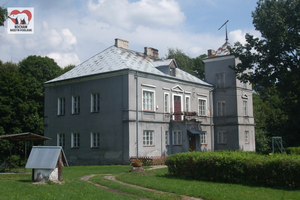
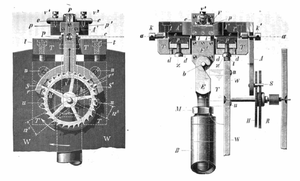
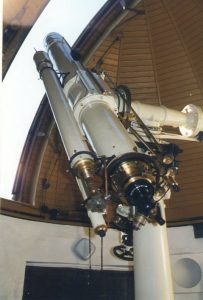
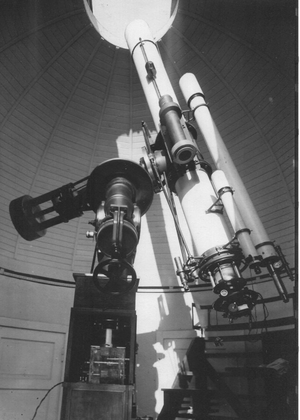
Władysław Szaniawski considered all his research and activities done so far as an introduction and preparation for greater work, for his ultimate love, i.e. astronomy. In 1909, Szaniawski built an astronomical observatory in Przegaliny. A single-storey, rectangular building with a slot in the roof - which was the observatory's meridian room, housing the meridian wheel of the Parisian Mailhat factory with an 81 mm lens. An integral complement to this wheel was a precise pendulum clock. This is the instrumentation used to determine the exact time, indispensable in every observation room. There was also a Riefler clock with a steel-nickel pendulum with electric winding. This clock provided a second contact and was connected to the refractor's clock mechanism in order to synchronize it. However, the main tool of the observatory and its real pride was the wonderful refractor, the largest and most beautiful in Poland at that time. The main telescope with a 20 cm Zeiss lens and 310 cm focal length housed two excellent astro cameras to take the photographs of the sky. The "astrotessar" astrocamera lenses were 12 cm in diameter and had a focal length of 60 cm each. There was also a 108 mm Steinheil telescope fixed to the main telescope, used to guide the refractor while taking photos at the focus of the main telescope. This entire tool, looking extremely impressive and imposing, was housed in a separate dome, made in a factory in Warsaw. The whole thing was complemented by a very accurate, one of the best of its kind, Repsold’s film measuring device. A detailed description of the tools can be found in the article by W. Szaniawski in "Wiadomości Matematyczne", Volume XV, pp. 263 - 268.
Before World War I the observatory had a radio receiving station built by Władysław Szaniawski. When radio legislation came into force in Poland, the scientist was the first to receive permission from the Ministry of Posts and Telegraphs to use radio equipment. The Przegaliny Observatory was unique and an unrivalled model for many governmental institutes. Szaniawski did not isolate himself in his research but maintained contact with university observatories in Warsaw, Cracow and Lviv.
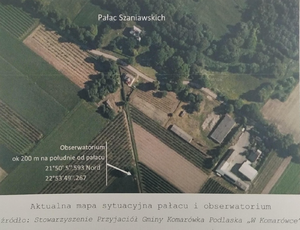
In 1914, the war broke out and the village of Przegaliny was in a war zone. The lenses of the main tools were hidden, but during some military operation the glasses and optical parts from the left glasses, micrometers, etc. were stolen. After the Germans had left, the items were returned to Przegaliny. The resumption of normal activity of the observatory was interrupted by the Bolshevik onslaught in 1920. Fortunately, it passed without any damage to the observatory. However, the war left behind a lot of terrible consequences. The Przegaliny estate, exhausted by the war, devastated by the German economy during the occupation, plowed by the Bolshevik wilderness - could no longer recover to its former state. The difficult financial situation of the state and the general economic crisis did the rest. The difficult situation of the property, at risk of total ruin, forced Szaniawski to liquidate the Observatory in 1925. Almost all of the instruments from the Observatory were purchased by Nicolaus Copernicus National Astronomical Institute. It was a painful blow for Szaniawski to get rid of his workshop which cost him a lot material sacrifice, effort, systematic work and fervent enthusiasm.
Death
Władysław Szaniawski died on 16 January, 1931. He was the only member of the family to be buried in the cemetery in Przegaliny Duże. To this day, his grave is attended and decorated with fresh flowers by the local people. The inscription on the tombstone reads:
Late Władysław Szaniawski
Owner of the Przegaliny estate
Born July 15, 1861 – died January 16, 1931
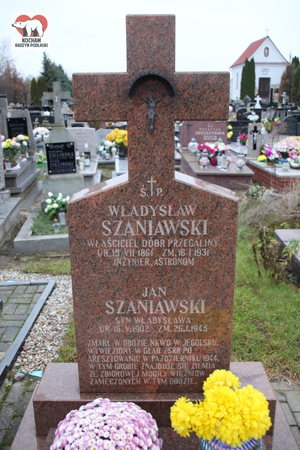
Engineer, Astronomer
Private life
Firstborn son - Władysław Wiktor
Władysław Szaniawski got married to Idalia Makomaska. The 7 of June, 1891 was a special day for them because their son, Władysław Wiktor, was born on that day but, unfortunately, Idalia died right after his birth. Władysław Wiktor was an associate professor at the University of Warsaw, Doctor of Philosophy and Natural Sciences. He participated in World War I and served as a captain of the Polish Army (so - called Dowborczyk), and was awarded the Cross of Valour. He was a passionate musician and mountaineer, also keen on photography and hunting. Władysław Wiktor died in 1975.
Remarriage and two sons
Władysław got married to Idalia's sister - Zofia Karolina Makomaska (born in 1880). His second wife gave birth to two sons - Jerzy and Jan Szaniawski.
Jan was born in 1902. He worked as a mechanical engineer and was passionate about car technology and radio. He had been conducting agricultural activities since the division of the estate in 1944. As part of the agrarian reform, he handed it over to the then authorities. Jan Szaniawski was also involved in the construction and maintenance of agricultural equipment which proves that he had inherited the inventor gene from his father. He also carried out a more serious project - assembling a wind farm from elements.
In 1942 Jan married Henryka Barbara Grabowska. In 1944 their daughter, Monika, was born.
The younger son Jerzy was born in 1906. He worked as a forest engineer and farmer who managed the estate. Hunting was one of his favourite activities. Jerzy served as a a lieutenant of horse artillery and was wounded in 1939. During the German occupation of Warsaw, he was arrested and taken to Auschwitz. At the end of World War II Jerzy was freed, but he did not return to Poland and remained in Germany. He was drafted into the Guard Company in the English occupation zone, this formation was part of the Polish Armed Forces. He died and was buried in Dortmund in 1987.
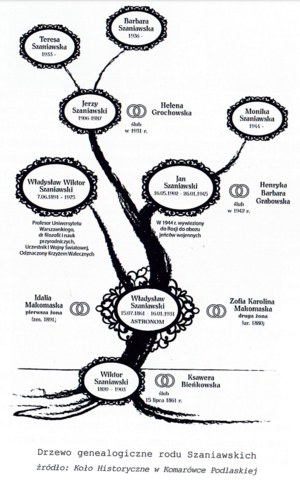
Family coat of arms
The Szaniawski family wears a noble coat of arms from the 13th century. Its interchangeable names are: Angus, Baran, Barany, Junoszyc. The PWN Encyclopedia states that it is most common in Lesser Poland and Greater Poland. The oldest seal comes from 1335 and it also appears in written sources. Of the over 120 families of the Junosza coat of arms, the most important were: Bieliński, Humięcki, Karnkowski, Podoscy, Radziejowski, Załuski.[1] The first mention of Junosza appears in the years 1464-1480 in a work called "Jewels of Długosz" - the oldest known local Polish description of coats of arms.
The description of the coat of arms reads: a silver ram in a red field on green tuft. The jewel: five ostrich feathers. In the original form there is no tuft, the ram has golden weapon and in the jewel there is only an emblem. Franciszek Piekosiński, relying on Długosz and Ambroży's list of coats of arms, presents a lamb with its head turned back without turf. Some images of the coat of arms show a ram with its head turned backwards, without a turf. Some images of the coat of arms show a ram standing on a freely floating tuft of grass, but on a green shield base, a hill or a three-hill. [2]
Present times
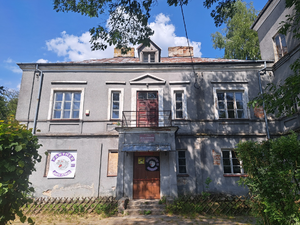
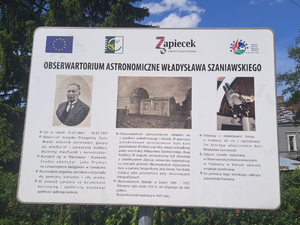
Nowadays, the building in Przegaliny is used as the headquarters of the local motorcycle club 'Panther', which organizes every year a festival called Motopicnic on the premises of the estate.
References
[1] https://encyklopedia.pwn.pl/haslo/Junosza;3918603 [dostęp 18 VIII 2023]
[2] https://encyklopedia.pwn.pl/haslo/Junosza;3918603 [dostęp 4 I 2024]
[3] https://pl.wikipedia.org/wiki/K._Rudzki_i_S-ka
Bibliografia
- "Władysław Szaniawski. Astronom z Przegalin Dużych. Dzieje rodu Szaniawskich i historia miejscowości" by Jakub Hapka, pages: 31-33, 39-44, 50-51,53, 61, 71, 78, 83, 85, 87-88, 90-92, 101-103, 106, 147-148
- Władysław Szaniawski "Z Obserwatorium Astronomicznego w Przegalinach"
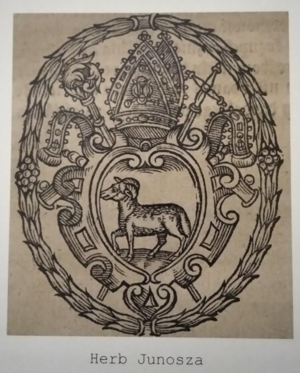

Ten artykuł jest wygenerowany automatycznie i bez skrępowania możesz zacząć go edytować. Obecny artykuł ma na celu pokazanie, jak należy tworzyć i edytować treści w Wikipedii, zgodnie z najlepszymi praktykami i wytycznymi projektu. Pamiętaj jednak, że konkursowy artykuł musi być w języku angielskim.
Struktura i styl
- Zachowaj neutralny punkt widzenia: Wszystkie artykuły powinny być pisane z neutralnego punktu widzenia, prezentując fakty bez stronniczości.
- Używaj jasnego i zrozumiałego języka: Pisz w sposób zrozumiały dla szerokiego grona odbiorców, unikaj skomplikowanego żargonu.
- Podziel tekst na sekcje: Używaj nagłówków wyższego i niższego stopnia do organizowania treści, co ułatwia czytanie i nawigację.
- Bądź zwięzły: Unikaj zbędnych informacji. Skup się na istotnych faktach i kontekście.
Referencje i źródła
- Cytuj wiarygodne źródła: Wszystkie informacje powinny być poparte wiarygodnymi i sprawdzonymi źródłami. Użyj przypisów[1]
- Unikaj nierzetelnych badań i publikacji: Wikipedia nie jest miejscem na publikowanie własnych teorii lub niezweryfikowanych informacji.
- Sprawdzaj aktualność źródeł: Upewnij się, że cytowane źródła są aktualne i nadal odnoszą się do opisywanych faktów.
Współpraca i edycja
- Szukaj konsensusu: W przypadku kontrowersji, staraj się osiągnąć porozumienie z innymi edytorami poprzez dyskusję na stronie dyskusji artykułu.
- Bądź odważny, ale ostrożny: Zachęca się do edytowania i poprawiania artykułów, ale zawsze z poszanowaniem pracy innych.
- Przestrzegaj zasad Wikipedii: Zapoznaj się z wytycznymi i zasadami projektu, takimi jak zasady dotyczące biografii osób żyjących, prawa autorskie, etc.
Podsumowanie
Pamiętaj, że cel Wikipedii to budowanie wolnej, wiarygodnej encyklopedii. Twój wkład powinien zawsze służyć temu celowi, przestrzegając przy tym zasad współpracy, neutralności i dokładności.
Przypisy
- ↑ "Konkurs Put Radzyń on the Map" - Strona główna konkursu Put Radzyń on the map, [dostęp 2024-03-15]